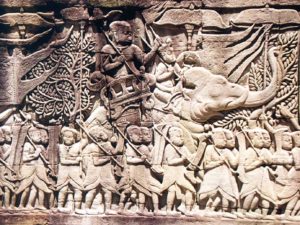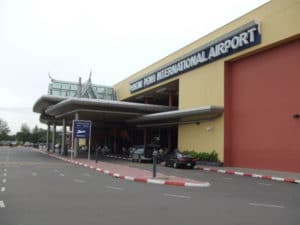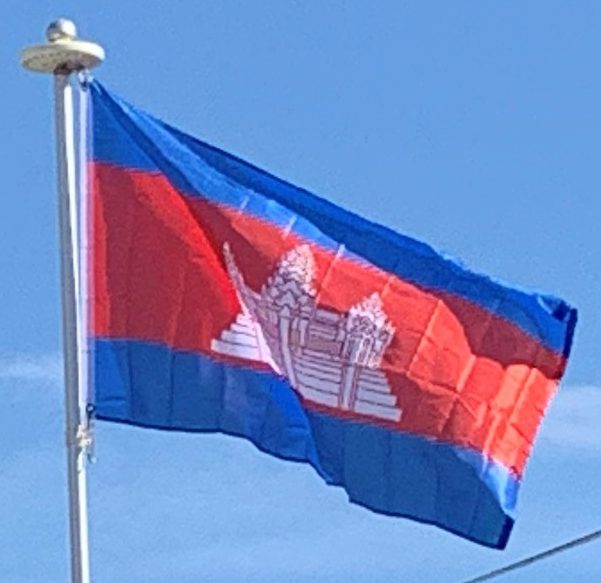The garment industry represents the largest portion of Cambodia’s manufacturing sector, accounting for 80% of the country’s exports. In 2012, the exports grew to $4.61 billion up 8% over 2011. In the first half of 2013, the garment industry reported exports worth $1.56 billion. The sector employs 335,400 workers, of which 91% are female.
The tourism industry is the country’s second-greatest source of hard currency after the textile industry. International visitor arrivals in 2018 topped six million, a ten-fold increase since the beginning of the 21st century.

Besides Phom Penh and Angkor Wat, other tourist destinations include Sihanoukville in the southwest which has several popular beaches and Battambang in the northwest, both of which are popular stops for backpackers who make up a significant portion of visitors to Cambodia. The area around Kampot and Kep including the Bokor Hill Station are also of interest to visitors. Tourism has increased steadily each year in the relatively stable period since the 1993 UNTAC elections.
Most international arrivals in 2018 were Chinese. Tourism receipts exceeded US$4.4 billion in 2018, accounting for almost ten percent of the kingdom’s gross national product. The Angkor Wat historical park in Siem Reap Province, the beaches in Sihanoukville, the capital city Phnom Penh, and Cambodia’s 150 casinos (up from just 57 in 2014) are the main attractions for foreign tourists.
Transportation:
The civil war and neglect severely damaged Cambodia’s transport system. With assistance from other countries Cambodia has been upgrading the main highways to international standards and most are vastly improved from 2006. Most main roads are now paved.

Cambodia has two rail lines, totaling about 380 miles. The lines run from the capital to Sihanoukville on the southern coast. Trains are again running to and from the Cambodian capital and popular destinations in the south. After 14 years, regular rail services between the two cities restarted recently – offering a safer option than road for travellers. Trains also run from Phnom Penh to Sisophon. As of 1987, only one passenger train per week operated between Phnom Penh and Battambang but a US$141 million project, funded mostly by the Asian Development Bank, has been started to revitalize the languishing rail system that will “(interlink) Cambodia with major industrial and logistics centers in Bangkok and Ho Chi Minh City”.
Besides the main inter-provincial traffic artery connecting Phnom Penh with Sihanoukville, resurfacing a former dirt road with concrete / asphalt and bridging five major river crossings have now permanently connected Phnom Penh with Koh Kong, and hence there is now uninterrupted road access to neighboring Thailand and its road network.
Cambodia has two major ports, Phnom Penh and Sihanoukville, and five minor ones.

Cambodia has three commercial airports. In 2018, they handled a record of 10 million passengers. Phnom Penh International Airport is the busiest airport in Cambodia. Siem Reap-Angkor International Airport is the second busiest, and serves the most international flights in and out of Cambodia. Sihanouk International Airport, is in the coastal city of Sihanoukville.
Flag of Cambodia:
The national flag of Cambodia in its present form was originally adopted in 1948 and readopted in 1993, after the Constituent Assembly election in 1993 and restoration of the monarchy.
